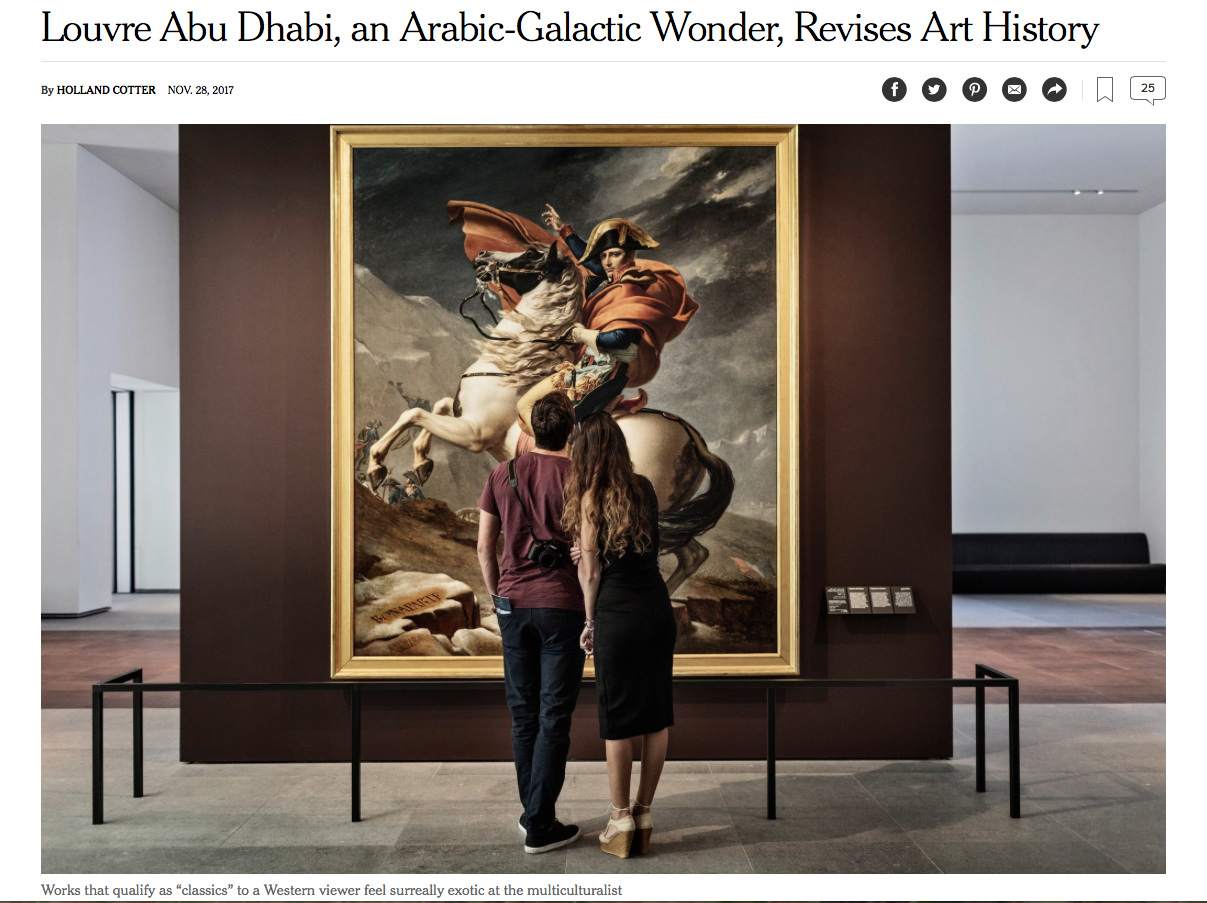My last post highlighted the artist Kehinde Wiley’s satiric imitation of Jacques-Louis David’s painting of Napoleon Bonaparte Crosssing the Alps. David painted five versions of this iconic image. It turns out one of these—the one that usually hangs in the Palace of Versailles—is on long-term loan to new Louvre Abu Dhabi in the United Arab Emirates.

Here’s a link to the full article in The New York Times that explains the museum and its relationship to the Louvre in France.
Abu Dhabi is about 1,500 miles farther southeast than Napoleon Bonaparte himself managed to travel during his Middle Eastern invasion. In 1798, twenty-nine-year-old General Bonaparte set out with 40,000 soldiers, 10,000 sailors and 160 scientists and scholars to conquer Egypt. The primary French objective was to block British access to a shorter route to India. Undoubtedly, Bonaparte saw it as an opportunity to follow in Alexander the Great’s footsteps.
The campaign struggled through a series of wins and losses. Ultimately, British, Ottoman and local forces stymied the French on what is now the coast of Lebanon. Napoleon, hearing of political turmoil in France, returned home in August 1799. On November 18, he seized his first political power in a coup d’etat.
Napoleon might not have been so successful politically if the French had known the truth about the Egyptian Campaign’s failures. Napoleon, however, was able to maintain his aura of invincibility.
Now, more than two hundred years later, the iconic painting of Napoleon Bonaparte the great conquer is, as The New York Times writes, “the rock star” of this incredible Middle Eastern museum. One look at that painting and you can appreciate the power of propaganda.
